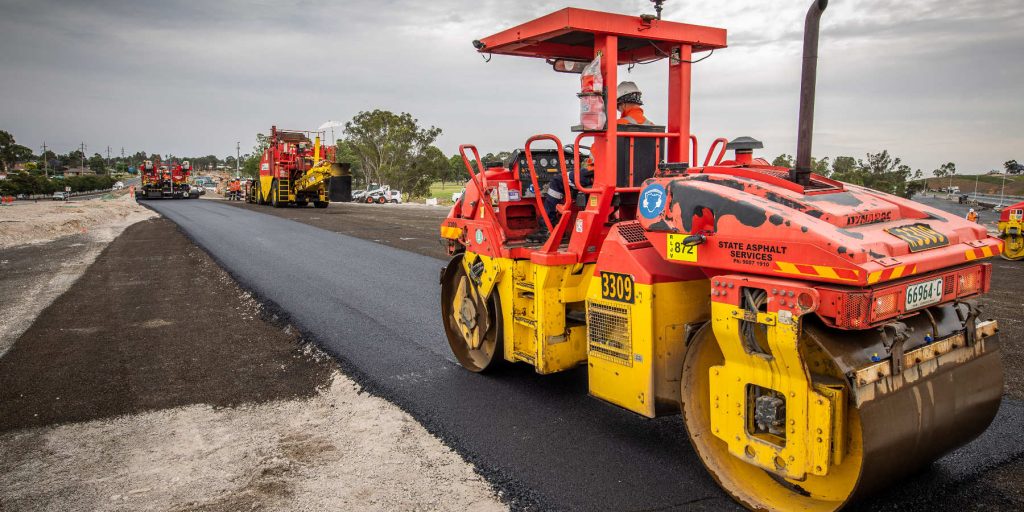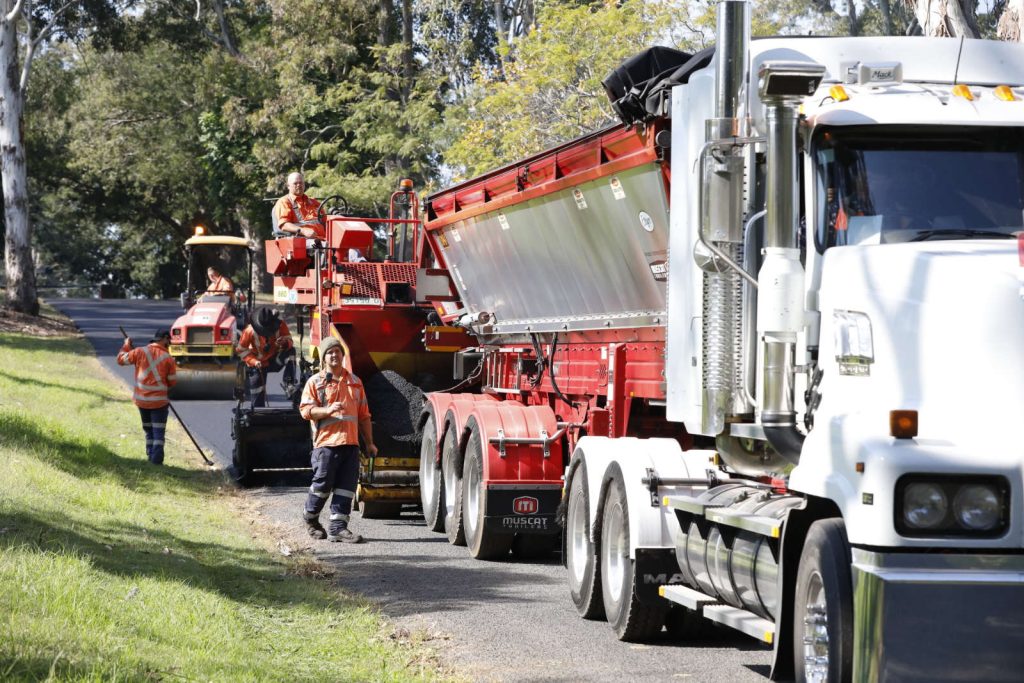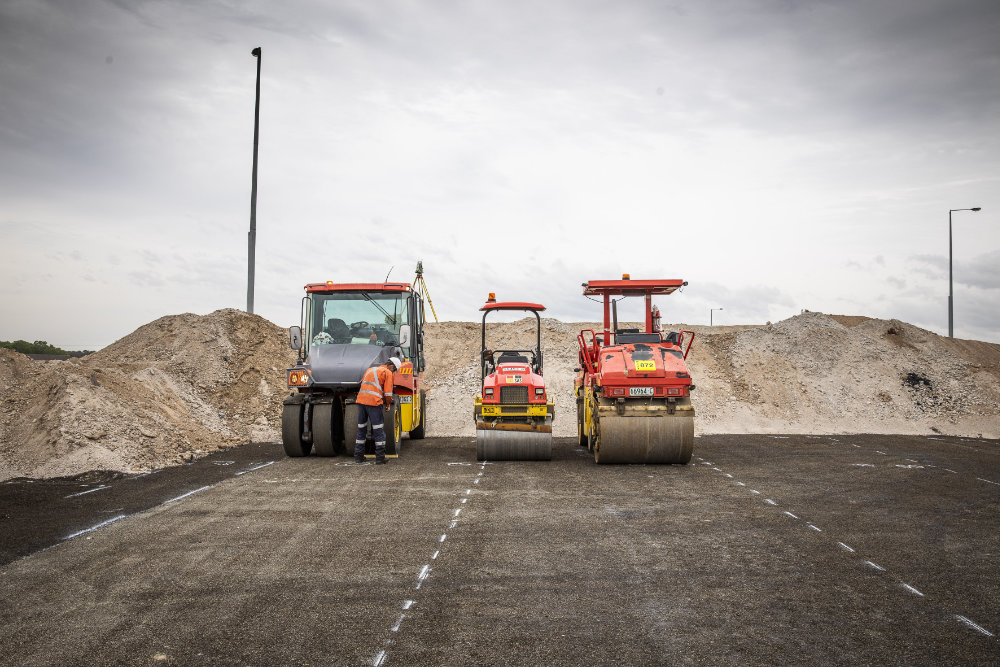Understanding Road Profiling: Techniques and Benefits for Smooth Pavement
Road profiling, also known as asphalt profiling, is a critical process in road construction and maintenance that involves removing a portion of an existing pavement layer to create a smoother and more even surface. By using specialised milling machines, asphalt contractors and road profile operators can remove damaged or uneven sections of the pavement, leaving behind a level surface that improves the durability and quality of the new asphalt layer.
It’s a process that ensures the optimal preparation of roads before resurfacing or applying new layers of asphalt – and that can improve the durability, safety and cost of road projects.
Why Road Profiling Matters for Smooth Pavement
Maintaining smooth and safe roads is essential for public safety, driving comfort, and long-term cost savings. Road profiling plays a key role in achieving these goals by addressing issues such as uneven surfaces, potholes, cracks, and rutting. Here are some of the main benefits of road profiling:
- Enhanced Durability: Removing damaged layers of pavement ensures that the new surface adheres better, reducing the risk of early failure and extending the lifespan of the road.
- Improved Safety: Smooth, even roads reduce the risk of accidents caused by potholes or uneven surfaces. Asphalt profiling ensures that drivers enjoy a safer, more comfortable ride.
- Cost Savings: By targeting specific areas in need of repair, road profiling minimises the need for full-depth reconstruction, saving both time and money.
- Optimised Drainage: Road profiling helps correct drainage issues by creating a consistent slope and preventing water from pooling on the surface, which can lead to cracks and potholes.

Techniques Used in Road Profiling
A range of techniques and equipment are used to achieve precise road profiling. Some of the most commonly used methods include:
- Cold Milling: This is the most widely used road profiling technique. It involves the use of milling machines equipped with rotating drums and cutting tools to remove existing layers of asphalt. The depth of removal can be adjusted based on project requirements, making it a versatile solution for everything from surface repairs to full-depth pavement removal.
- Fine Milling: Fine milling is used to achieve a smoother and more precise surface finish. This technique removes a thinner layer of asphalt, resulting in a surface that is ready for resurfacing with minimal preparation.
- Surface Texturing: In some cases, profiling involves creating specific textures on the pavement surface to improve skid resistance and ensure a safer driving experience.
- Variable Depth Milling: When the road surface is uneven or heavily rutted, variable depth milling allows contractors to remove material at different depths, creating a consistent and level surface.
Engaging Road Profiling Expertise
Experienced asphalt contractors like Kypreos Group are essential for successful road profiling projects. We can assess the condition of the existing pavement, determine the most suitable profiling technique, and use advanced equipment to achieve accurate results. Key steps in the road profiling process include:
- Assessment and Planning: We evaluate the existing road conditions, identify areas that require attention, and develop a detailed plan for the profiling process.
- Precision Milling: Using state-of-the-art milling machines, we remove layers of pavement with high precision, ensuring that the road surface is level and ready for resurfacing.
- Surface Preparation: After profiling, the surface is thoroughly cleaned and any remaining debris is removed. This ensures that the new asphalt layer adheres properly, providing a long-lasting and durable surface.
Integrating Road Profiling with Asphalt Paving
Road profiling is often a critical step in asphalt paving projects. By removing damaged or deteriorated layers of pavement, profiling creates a clean and stable base for the application of new asphalt. This improves the overall durability and performance of the road, reducing the risk of future issues such as cracking, rutting, or potholes.
Benefits of integrating road profiling with asphalt paving include:
- Improved Adhesion: New asphalt layers bond more effectively to a properly prepared surface, resulting in a stronger, longer-lasting pavement.
- Optimised Thickness Control: Profiling ensures that new layers are applied at the correct thickness, enhancing the structural integrity of the road.
- Reduced Maintenance Costs: A properly profiled surface is less prone to issues, minimising the need for frequent repairs and maintenance.

The Environmental Benefits of Road Profiling
In addition to improving road quality and durability, road profiling offers significant environmental benefits. The asphalt removed during the profiling process can be recycled and reused in new paving projects, reducing the need for new raw materials and conserving natural resources. This aligns with the industry’s push toward more sustainable infrastructure practices and helps minimise the environmental impact of road construction and maintenance.
Key environmental benefits include:
- Recycling of Asphalt: The materials removed during profiling can be processed and incorporated into new asphalt mixes, reducing waste and conserving resources.
- Lower Carbon Footprint: By extending the lifespan of existing roads, profiling reduces the need for frequent resurfacing or reconstruction, resulting in lower greenhouse gas emissions.
Advanced Technologies in Asphalt Profiling
The asphalt industry continues to evolve with new technologies that enhance the accuracy and efficiency of road profiling. Modern milling machines are equipped with GPS and automated systems that allow for precise depth control and consistency throughout the profiling process. This not only improves the quality of the finished surface but also reduces the time and labour required for each project.
Other innovations in asphalt profiling include:
- Laser-Guided Milling: This technology ensures that the milling process is carried out with unmatched precision, creating a perfectly level surface for resurfacing.
- Dust Control Systems: Advanced dust control systems reduce the environmental impact of profiling operations by capturing and minimising dust generated during milling.

Choosing the Right Asphalt Profiling Solution
For optimal results, it is crucial to work with knowledgeable asphalt contractors who understand the complexities of road profiling. Factors such as traffic volume, climate, and the condition of the existing surface must be considered when selecting the appropriate profiling technique. At Kypreos Group, we can assess these variables to develop a tailored approach that meets the specific needs of your projects.
Key factors to consider include:
- Traffic Load: Roads with high traffic volumes may require deeper profiling to ensure a stable foundation for new asphalt layers.
- Surface Condition: The level of damage and deterioration will influence the depth and type of profiling required.
- Climate Considerations: Temperature fluctuations and weather conditions can impact the effectiveness of profiling and resurfacing efforts.
Maximising Road Longevity Through Profiling
Road profiling is a crucial step in ensuring the longevity and performance of asphalt surfaces. By creating a smooth, even base for new layers, profiling minimises future maintenance needs and reduces the risk of pavement failures. For municipalities, businesses, and property owners, investing in road profiling as part of a comprehensive maintenance plan translates to long-term cost savings and improved road safety.